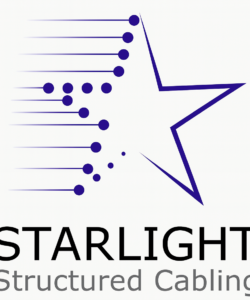What is WiFi 6 and what are its benefits? Wi-Fi 6 is the next-generation wireless standard, faster than 802.11ac. More than speed, it will provide better browsing performance.
Although 5G is getting more and more popular, and we still have 5G cell phones on the market, knowing that this technology may take a long time to reach our hands is disheartening. Wi-Fi 6 technology can achieve faster network connections and lower latency. More importantly, Wi-Fi 6 technology might not be as difficult to acquire as 5G.
What is WiFi 6?
WiFi 6 is the latest version of WiFi, based on the IEEE 802.11ax standard. It offers a number of advantages over older WiFi technology, which we’ll look at next. WiFi 6 comes with a new naming convention designed to allow users to easily see what type of device they are using.
In keeping with the new naming convention, here’s how WiFi would have been defined in the past, and how it will be identified in the future. The WiFi generation name is tied to the IEEE standard they support.
- WiFi 1 – 802.11b, released in 1999
- WiFi 2 – 802.11a, released in 1999
- WiFi 3 – 802.11g, released in 2003
- WiFi 4 – 802.11n, released in 2009
- WiFi 5 – 802.11ac, released in 2014
- WiFi 6 – 802.11ax, released in 2019
Along with the new method of identifying multiple generations of WiFi, technology is the concept of clearly labelling devices and software that support different types of WiFi.
The purpose of this is to make it easier for users to understand the features of their devices and software, and to make more informed choices about equipment upgrades and purchases.
That means you should start to see devices that support WiFi 6 instead of the 802.11ax standard. This is certainly easier to remember. You’ll also see devices that have passed the WiFi Alliance certification process and are now labelled “WiFi 6 Certified”.
STARLIGHT recommends that all hardware and software manufacturers adopt labelling conventions to standardize the information presented to consumers.
The benefits of WiFi 6
speed
Speed is one of the first advantages of WiFi 6. Internet speeds with this latest standard are expected to increase by 40% compared to the previous generation.
This data transmission rate is achieved through an efficient data encoding system, where more blocks of data are compressed into the same radio waves.
The internal chips that take care of encoding and decoding these signals have become more powerful with the next standard. This data transmission rate increases internet speeds even on 2.4GHz networks.
More Devices
One of the most notable improvements in WiFi 6 is the implementation of a technology called Orthogonal Frequency Division Multiple Access. Briefly, this technology can classify a wireless channel into several subchannels, and each of these subchannels has the ability to carry data to different devices.
Enhanced MIMO is another aspect of this. This technology is the deployment of more antennas on a device, to promote better communication between connected devices.
In WiFi 5, only access points can communicate with connected devices, not the other way around. But in WiFi 6, connected devices can also respond to access points. This makes this latest wireless standard implemented in public areas such as airports, malls and other busy places.
4K video conferencing without crashing
Globalization and mobility are not new terms in the market, but during the pandemic, it has become even more evident that many video conferences in business meetings begin and end with just one question – “Can you hear me?” Delays and failures are some of the agendas of meetings today.
With WiFi 6 this will not be the case as it will provide the connectivity speeds and power needed to enable seamless video conferencing at 4K resolutions.
Reduced energy consumption
Reduced power consumption means longer battery life. The new feature called Target Wake Time is an implementation of an access point capable of understanding exactly what type of device is connected, such as a tablet, notebook or smartphone, and putting it to put your wireless radio into sleep mode and then turn it on again when the transmission is engaged. While the device waits for signals from the access point, it remains in sleep mode, conserving the battery life of connected devices.
When will WiFi 6 be available?
So far, there is not much information about its availability in the market. While their offerings look promising, we still have to wait a little longer to experiment with mass usage and deployment of WiFi 6. As such, there are no vendors or devices that support this technology yet.
But when they come out, the new naming protocols will ensure that everyone can understand that the device supports WiFi 6. If speculation is true, the next generation of iPhones will support WiFi 6 technology.
It should be noted that the completion of WiFi 6 requires not only WiFi 6 endpoints but also WiFi 6 router support. This network provides multi-device connection, increased network speed and reduced power consumption. These are the reasons why WiFi 6 will gradually become popular.
If You are living in Southern California Contact STARLIGHT to discuss your needs, We would be happy to propose a solution
- Email: info@starlightcabling.com
- Phone: 949-434-4252

